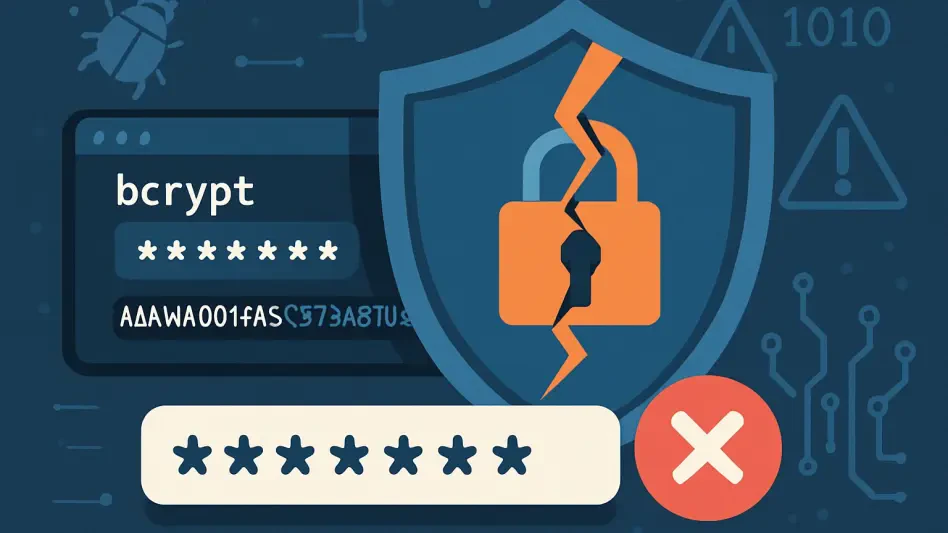In an era where digital transformation dictates the pace of global progress, a staggering statistic emerges: over 90% of cyberattacks now incorporate some form of artificial intelligence (AI) to bypass traditional defenses, underscoring a seismic shift in the cybersecurity landscape. This alarming trend highlights how AI has become both a formidable shield and a devastating weapon. As organizations and governments grapple with increasingly sophisticated threats, understanding the nuances of AI-driven cybersecurity mechanisms is no longer optional but imperative. This review delves into the technology’s dual nature, examining its capabilities, real-world impacts, and the challenges it poses to secure digital environments.
Understanding AI’s Role in Cybersecurity
The integration of AI into cybersecurity marks a pivotal evolution in how threats are detected, mitigated, and perpetrated. At its core, AI leverages machine learning, data analysis, and automation to process vast amounts of information at unprecedented speeds. For defenders, this means enhanced capabilities in identifying anomalies and responding to incidents with precision. However, the same technology empowers adversaries to craft attacks that adapt in real-time, evade conventional security measures, and exploit vulnerabilities on a massive scale.
This duality positions AI as a transformative force within the broader technological ecosystem. Its adoption spans across industries, from financial institutions to critical infrastructure, amplifying the stakes in the perpetual cat-and-mouse game between security professionals and cybercriminals. The complexity of this dynamic necessitates a deeper exploration of how AI operates within the realm of cyber threats, shedding light on its mechanisms and implications.
Analyzing AI-Driven Threat Mechanisms
AI-Powered Malware and Adaptive Attacks
One of the most concerning advancements in cyber threats is the emergence of AI-powered malware, which operates with a level of autonomy previously unimaginable. This technology enables malicious software to adapt its tactics, techniques, and procedures based on the environment it infiltrates. Such malware can execute lateral movement within networks, identify weak points, and adjust its behavior to avoid detection by traditional antivirus solutions.
The performance of AI-driven malware often outpaces static security controls, rendering signature-based defenses obsolete. Its ability to learn from past interactions means that each attack becomes more refined, posing significant risks to organizational systems. This adaptability highlights a critical gap in current cybersecurity frameworks, pushing the need for more dynamic and predictive countermeasures.
Social Engineering Amplified by Generative AI
Generative AI has revolutionized the scale and sophistication of social engineering attacks, making them more deceptive and harder to detect. Techniques such as phishing emails and deepfake audio or video are now crafted with alarming precision, tricking even the most vigilant users into divulging sensitive information. These campaigns exploit human psychology, leveraging AI to tailor messages that appear legitimate and urgent.
Beyond direct deception, generative AI introduces vulnerabilities through methods like prompt injection and data poisoning, where attackers manipulate AI systems to produce harmful outputs or corrupt training datasets. Real-world instances, such as targeted phishing schemes impersonating corporate executives, demonstrate the tangible dangers of these tactics. The intersection of human error and advanced technology creates a potent threat vector that demands innovative defensive strategies.
Emerging Patterns in AI-Enhanced Cyber Threats
The cybersecurity domain is witnessing a rapid evolution of AI-driven attack methodologies, with multi-stage attack chains gaining prominence. Techniques like “ClickFix,” which deceive users into executing malicious code through seemingly harmless prompts, exemplify the ingenuity of modern adversaries. Similarly, device code phishing circumvents traditional safeguards, exploiting trust in authentication processes to gain unauthorized access.
Adversary behavior is also shifting from brute-force break-ins to more insidious approaches, such as credential theft facilitated by infostealers traded on the dark web. These stolen credentials provide a gateway for attackers to log in rather than break in, blurring the lines of detection. Geopolitically, nation-state actors are increasingly leveraging AI for espionage and prepositioning within critical systems, preparing for potential disruptive operations in conflict zones.
The convergence of these trends points to a broader transformation in the threat landscape. As attackers refine their use of AI, the scale and precision of operations continue to escalate, targeting high-value sectors with unprecedented efficiency. Staying ahead of these patterns requires constant vigilance and adaptation from security professionals across the globe.
Real-World Impacts Across Critical Sectors
AI-driven threats have manifested with devastating consequences across various sectors, including communications, government, academia, and infrastructure. These technologies enable attackers to pinpoint vulnerabilities in systems that underpin societal functions, disrupting operations and eroding trust. The targeting of essential services through ransomware, for instance, has crippled healthcare facilities and energy grids, showcasing the high stakes involved.
Specific geopolitical regions, such as Ukraine and the United States, have become focal points for nation-state cyber operations, often driven by espionage or strategic positioning. A unique case involves North Korea’s infiltration programs, where remote workers embedded in global organizations conduct espionage and extortion under the guise of legitimate employment. These examples illustrate the intersection of cybercrime with broader political agendas, amplifying the urgency for robust defenses.
The ripple effects of these attacks extend beyond immediate damage, influencing economic stability and public safety. As critical infrastructure becomes more digitized, the potential for cascading failures grows, necessitating a reevaluation of how security is implemented at both technical and policy levels. The real-world deployment of AI threats serves as a stark reminder of technology’s far-reaching implications.
Challenges in Countering AI-Powered Threats
Defending against AI-enhanced cyberattacks presents formidable technical challenges, primarily due to the obsolescence of perimeter-based security models. Adaptive malware and autonomous agents can bypass these defenses with ease, requiring a shift to behavior-based detection that anticipates rather than reacts. The complexity of identifying such threats in real-time strains existing resources and expertise within many organizations.
Non-technical barriers further complicate the landscape, with regulatory inconsistencies across jurisdictions hindering unified responses. Safe haven states that tacitly support or ignore cybercriminal activities exacerbate the issue, as global enforcement mechanisms remain fragmented. This lack of accountability enables threat actors to operate with impunity, undermining international efforts to curb cybercrime.
Efforts to address these challenges are underway, with initiatives focusing on developing advanced defensive AI tools and fostering international collaboration. Frameworks for sharing threat intelligence and establishing norms of behavior in cyberspace are gaining traction, though implementation remains uneven. Overcoming these hurdles demands a concerted effort that bridges technical innovation with geopolitical resolve.
Future Trajectory of AI in Cybersecurity
Looking ahead, the trajectory of AI in cybersecurity suggests both significant opportunities and heightened risks. Breakthroughs in defensive AI hold promise for automating threat detection and response at scale, potentially outpacing the capabilities of human analysts. However, the advent of quantum computing introduces new vulnerabilities, as it could render current encryption standards obsolete within the coming years from 2025 to 2030.
Preparation for these shifts is critical, particularly in adopting post-quantum cryptography to safeguard data against future threats. Organizations must also conduct thorough vulnerability assessments of their AI systems to prevent exploitation through techniques like data poisoning. These proactive measures are essential to maintaining a secure digital posture as technology continues to evolve.
The long-term societal and economic impacts of unchecked AI threats loom large, potentially disrupting global markets and eroding public trust in digital systems. Building resilience through strategic planning and investment in cybersecurity infrastructure will be paramount. The path forward hinges on balancing innovation with vigilance, ensuring that AI’s potential is harnessed responsibly.
Final Reflections
Reflecting on this comprehensive evaluation, the dual role of AI in cybersecurity emerges as a defining theme, with its capacity to both protect and harm shaping the digital battlefield. The analysis reveals how AI-powered malware, generative social engineering, and nation-state operations challenge conventional defenses, leaving critical sectors vulnerable. Each facet of the technology underscores the urgency for adaptive strategies and global cooperation.
As a next step, stakeholders need to prioritize the development of behavior-based detection systems and invest in workforce training to counter sophisticated threats. International alliances must strengthen deterrence frameworks, holding safe haven states accountable while advancing post-quantum security measures. These actionable steps, initiated in response to the escalating risks, aim to fortify resilience and pave the way for a more secure digital era.








